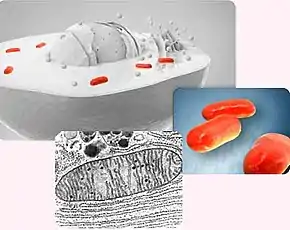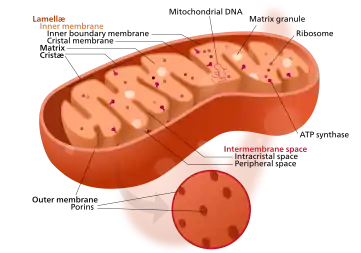Mitochondria(-singular, mitochondrion) is a membrane bound cell organelle.In 1890 Richard Altmann established them as cell organelles and called them bioblasts. The term mitochondria was coined by Carl Benda in 1898.Both plants and animals will contain mitochondria.

STRUCTURE
It is a rod shaped organelles It contains two membranes. Outer membrane is smooth where as inner membrane is folded.The folds of mitochondria are called as cristae. The cristae of mitochondria increases the surface area due to which more energy can be produced.

FUNCTION
They generate power by converting oxygen and nutrients into ATP. ATP is the chemical energy "currency of the cell" that powers the cells metabolic activities.This process is called aerobic respiration and the reason animals breath oxygen.
- Without this organelle higher animals would likely not exist because their cells would only be able to obtain energy from anaerobic respiration.
- In-fact mitochondria enables cells to produce 15times more ATP than they would otherwise need large amount of energy in order to survive
SPECIALITY
Mitochondria is a semi autonomous body as it contains its own DNA and nucleus.The inner membrane of mitochondria will also contain ribosomes which is why it can synthesize its own protiens.